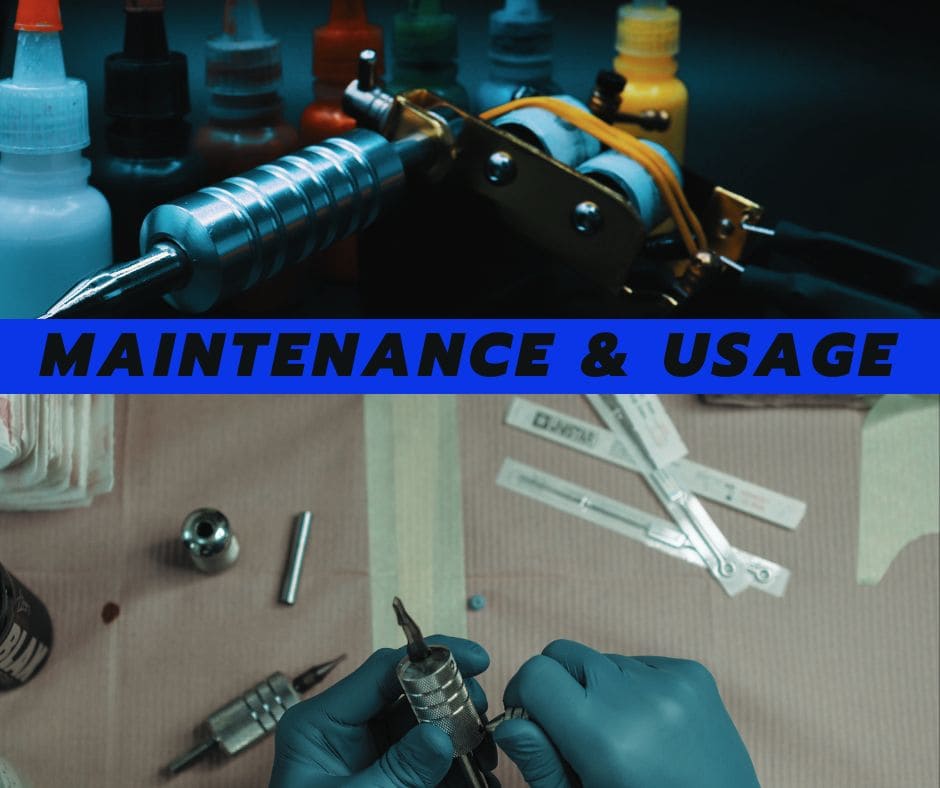Introduction
In the world of tattoo industry, Tattoo machine autoclave & maintaining a clean and sterile environment is of utmost importance. Tattoo Machine Autoclaves play a crucial role in ensuring the sterilization of tattoo equipment, including tattoo machines, grips, and needles. In this article, we will explore the significance of Tattoo Machine Autoclaves, their functioning, and the benefits of Tattoo machine autoclaves they offer to both tattoo artists and clients. Let’s delve into the world of tattoo machine autoclaves and their role in maintaining a safe and hygienic tattooing experience.
Understanding the Importance of Autoclaves
When it comes to tattooing, ensuring the safety and well-being of both the artist and the client is paramount. One critical aspect of maintaining a safe tattooing environment is proper sterilization of the equipment. This is where tattoo machine autoclaves come into play.
What is a Tattoo Machine Autoclave?
A tattoo machine autoclave is a specialized device used for sterilizing tattoo equipment, including needles, grips, and tubes. Autoclaves use steam under high pressure to kill bacteria, viruses, and other microorganisms that may be present on the equipment. This process ensures that the equipment is free from any potential contaminants, reducing the risk of infection during tattoo procedures. Autoclaves are commonly used in medical and healthcare settings for sterilization purposes, and they have become a standard tool in professional tattoo studios.
Understanding the Importance of Autoclaves
When it comes to tattooing, ensuring the safety and well-being of both the artist and the client is paramount. One critical aspect of maintaining a safe tattooing environment is proper sterilization of the equipment. This is where tattoo machine autoclaves come into play.
Importance of Sterilization in Tattooing
Sterilization is crucial in the tattooing process to prevent the transmission of infections and diseases. When needles penetrate the skin, there is a risk of introducing bacteria and viruses into the body. Proper sterilization practices, including the use of tattoo machine autoclaves, help eliminate these risks and create a safe environment for tattooing. Infections such as hepatitis B and C, HIV, and MRSA (methicillin-resistant Staphylococcus aureus) can be transmitted through improperly sterilized tattoo equipment. By utilizing tattoo machine autoclaves, tattoo artists can significantly reduce the risk of infection and provide a safe experience for their clients.
The Working Principle of a Tattoo Machine Autoclave
Tattoo machine autoclaves operate based on a simple yet effective principle: steam sterilization. The autoclave consists of a chamber, heating elements, a pressure gauge, and controls to regulate temperature and pressure. The process begins by placing the tattoo equipment inside the autoclave chamber, which is then sealed tightly. Once the autoclave is activated, the internal temperature and pressure rapidly increase. This increase in heat and pressure creates steam within the chamber, which effectively kills microorganisms. The elevated temperature ensures that even the most resilient pathogens are neutralized, providing a safe and sterile environment for tattoo procedures.
Machine Autoclaves Working process
Tattoo machine autoclaves operate by subjecting tattoo equipment to high-pressure steam, which penetrates and sterilizes every surface of the instruments. The process have following steps:
- Preparing the Equipment: Tattoo equipment, such as needles, grips, and tubes, is placed in sterilization pouches or trays designed for autoclave use. These pouches or trays ensure proper steam circulation and maintain the sterility of the items.
- Loading the Autoclave: The prepared equipment is loaded into the autoclave chamber, ensuring that items are not overcrowded to allow for adequate steam penetration.
- Setting Sterilization Parameters: The autoclave is set to the appropriate sterilization parameters, including temperature, pressure, and duration, based on the manufacturer’s guidelines and industry standards.
- Sterilization Cycle: The autoclave initiates the sterilization cycle, where high-pressure saturated steam is pumped into the chamber, rapidly increasing the temperature. The combination of heat, pressure, and steam effectively kills microorganisms on the tattoo equipment.
- Cooling and Drying: After the sterilization cycle, the autoclave gradually releases pressure and cools down the chamber. Once the items have cooled, they are considered sterile but may require drying before use.
- Unloading: Once the autoclave has cooled, the sterilized tattoo equipment can be safely removed and stored until the next tattooing session.
- Verification: Tattoo artists should regularly use biological indicators or other verification methods to ensure the effectiveness of the autoclave sterilization process.
Why Tattoo Machine Autoclaves are Essential?
Infection Prevention: Autoclaves are highly effective in killing pathogens, including bacteria and viruses, which may be present on tattoo equipment. Sterilizing the equipment ensures that there is no risk of infection transmission from one client to another.
Safety Assurance: Tattoo machine autoclaves provide a reliable and standardized method of sterilization, giving peace of mind to both the tattoo artist and the client. By eliminating the risk of infections, autoclaves contribute to a safe tattooing environment.
Compliance with Regulations: Many jurisdictions have specific health and safety regulations that require tattoo studios to use autoclaves for sterilization. By investing in an autoclave, tattoo artists can ensure compliance with these regulations and maintain a professional reputation.
Client Safety: When clients choose to get a tattoo, they put their trust in the tattoo artist and the studio’s commitment to their well-being. By using autoclaves, you reassure clients that you prioritize their safety by adhering to strict sterilization protocols
Client Trust: When clients see tattoo artists utilizing autoclaves as part of their sterilization procedures, it instills confidence and trust. Knowing that their tattoo equipment has undergone proper sterilization enhances the overall client experience.
Equipment Longevity & Cost-effectiveness: Tattoo machine autoclaves not only protect the health and safety of individuals but also extend the lifespan of tattoo equipment. Proper sterilization reduces the risk of corrosion and damage caused by improper cleaning methods.
Peace of Mind: By utilizing autoclaves, both tattoo artists and clients can have peace of mind, knowing that the equipment used during the tattooing process is properly sterilized. This promotes trust and confidence in the studio’s professionalism and dedication to safety.
Choosing the Right Tattoo Machine Autoclave
When selecting a tattoo machine autoclave, it’s crucial to consider the following factors:
- Size and Capacity: Determine the size and capacity of the autoclave based on the volume of tattoo equipment that needs to be sterilized. Ensure that it can accommodate the equipment used in your studio efficiently.
- Performance and Efficiency: Look for an autoclave with reliable performance and efficient sterilization cycles. Consider features such as programmable cycles, fast heating times, and drying options.
- Programmable Features: Look for autoclaves with programmable features, such as different sterilization modes and cycle customization options. These features enable flexibility and adaptability to varying sterilization requirements.
- Safety Features: Ensure the autoclave has safety features such as pressure and temperature monitoring, automatic shut-off, and alarms for malfunctions or abnormalities.
- Sterilization Method: Autoclaves can use either traditional steam sterilization or newer technologies such as pre-vacuum or vacuum-assisted sterilization. Research and evaluate the different methods to choose the one that best suits your needs.
- Quality and Reliability: Invest in a high-quality autoclave from a reputable manufacturer. Look for features such as temperature and pressure monitoring, automatic shut-off, and safety mechanisms to ensure reliable and consistent performance.
- Ease of Use: When evaluating the user-friendliness of an autoclave, it is important to consider various factors. Firstly, intuitive controls make operating the autoclave a breeze. Additionally, programmable settings allow for customized sterilization cycles based on specific needs.
Ensuring Compliance with Certificate, Health and Safety Standards
Choose an autoclave that meets relevant industry standards and regulations. Look for certifications such as CE (Conformité Européene) or FDA (Food and Drug Administration) approval. In the tattoo industry, adhering to health and safety standards is crucial for the reputation and success of a tattoo studio. To ensure compliance with these standards:
Regularly Check and Calibrate
Tattoo machine autoclaves should be regularly inspected, tested, and calibrated to ensure their proper functioning. This helps maintain the effectiveness of the sterilization process.
Use Proper Packaging
After autoclaving the tattoo machine equipment should be stored in appropriate packaging, such as sterilization pouches or wraps, to maintain their sterility until they are ready for use.
Monitor Sterilization Cycles
Keep a record of autoclave sterilization cycles, including the date, time, and items sterilized. This documentation demonstrates your commitment to maintaining a sterile environment.
Proper Maintenance and Usage

To ensure the longevity and optimal performance of a tattoo machine autoclave, proper maintenance and usage are essential. Follow these guidelines:
- Follow Manufacturer’s Instructions: Always adhere to the manufacturer’s instructions for operating, cleaning, and maintaining the autoclave. This ensures its proper functionality and longevity.
- Regular Maintenance: Adhere to the manufacturer’s instructions regarding routine maintenance tasks, such as cleaning and calibration. This will help prevent malfunctions and ensure accurate sterilization.
- Routine Inspections: Perform routine inspections to check for any signs of wear or damage. Pay attention to components such as seals, valves, and pressure gauges. Replace any faulty parts promptly.
- Proper Loading: Arrange tattoo equipment inside the autoclave chamber, allowing steam to circulate freely. Avoid overloading, as it may hinder proper sterilization.
- Sterilization Indicators: Use sterilization indicators, such as autoclave tape or chemical indicators, to verify that the autoclave is functioning correctly. These indicators change color when the sterilization cycle is complete, providing visual assurance of successful sterilization.
- Water Quality: Use distilled or demineralized water in the autoclave to prevent mineral buildup and potential damage to the equipment.
- Monitoring and Record-Keeping: Maintain a log of autoclave usage, including sterilization cycles, dates, and equipment details. This documentation demonstrates compliance with sterilization protocols.
- Servicing and Repairs: Engage qualified professionals for periodic servicing and repairs to address any issues or malfunctions promptly.
- Calibrations and Validations: Schedule regular calibrations and validations to ensure the autoclave operates within the specified parameters. This helps maintain consistent sterilization effectiveness.
- Training and Certification: Ensure that you and your staff receive proper training on autoclave usage and sterilization procedures. Certification courses are available to enhance your knowledge and expertise in autoclave maintenance and operation.
Frequently Asked Questions (FAQs)
Strongly advise against using a regular household autoclave for sterilizing tattoo equipment, as they may not attain the required temperature and pressure levels for effective sterilization’s effective sterilization.
The cost of tattoo machine autoclaves can vary depending on the size, capacity, and features of the equipment. It is important to consider them as a necessary investment in maintaining a safe and hygienic tattooing environment. Proper sterilization practices contribute to the overall professionalism and reputation of a tattoo studio.
Proper maintenance and cleaning of the autoclave are essential to ensure its longevity and optimal performance. Follow the manufacturer’s instructions for routine maintenance, cleaning, and calibration. Regularly check and replace filters, gaskets, and other components as recommended.
When used correctly and maintained properly, tattoo machine autoclaves are safe to use. However, it’s important to follow all safety protocols, including wearing appropriate personal protective equipment, monitoring sterilization cycles, and conducting regular equipment checks to minimize any potential risks.
Conclusion
Tattoo machine autoclaves are indispensable tools for ensuring the sterilization and safety of tattoo equipment in studios. By investing in a quality autoclave, tattoo artists prioritize the well-being of both themselves and their clients. Sterility assurance, compliance with health regulations, and peace of mind are among the many benefits of utilizing autoclaves. Proper maintenance and usage, coupled with regular sterilization practices, contribute to a professional and hygienic tattooing experience. Choose the right autoclave for your studio, follow industry guidelines, and prioritize the health and safety of everyone involved. Get started with a tattoo machine autoclave and create art with confidence.
